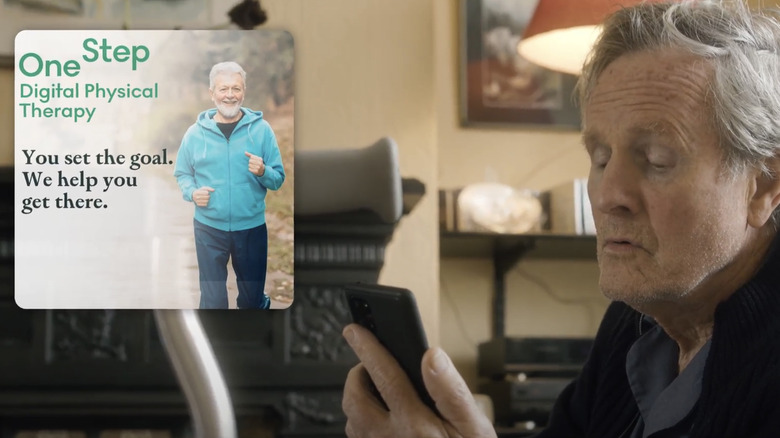Physical Therapist Dr. Stephanie Wakeman On How Telehealth Is Changing Physical Therapy - Exclusive
Physical therapy is a common prescription for recovery from an injury or surgery or for those dealing with chronic pain. According to a 2019 survey of physical therapists conducted by Rehab U Practice Solutions, physical therapy practices in the U.S. see an average of 100 to 200 patients per week. A lot of us are going to physical therapy.
However, the same physical therapists estimated that only about 40% of the patients they see complete their entire course of treatment. They also reported that they usually only see their patients one or two times a week, which means that they can only confirm that their patients are adhering to their treatment plan once or twice a week, while they're in the office.
The research shows that people aren't great at doing their physical therapy exercises at home. One review of the research found that only 35% of patients strictly followed their physical therapy treatment plan. Since actually doing the prescribed exercises is crucial to the success of a course of physical therapy, it's not surprising that between 20% and 50% of patients come back for another course of physical therapy.
Getting patients actively involved in their physical therapy has always been a challenge of the field. However, the rise of telehealth has presented a workable solution. In an exclusive interview with Health Digest, Physical Therapist Dr. Stephanie Wakeman discussed how virtual physical therapy is changing how physical therapy is administered and incentivizing physical therapy for patients.
Connecting physical therapists with their patients
Dr. Wakeman was an early adopter of the telehealth model for physical therapy. She loved the fact that she could work with patients anywhere and that she could connect with patients when they needed her, not just at once a week appointments.
"Telehealth allows for ongoing communication with your physical therapist daily to address questions and concerns immediately," she said.
Telehealth platforms also allowed her to track her patients' progress between appointments. Every time a patient did their physical therapy exercises, they logged their results in the telehealth platform, usually via an app. Wakeman could see those results immediately and know that her patients were adhering to their treatment plan. Iif they missed a few days, she could see that and check in on them. The easy communication and monitoring incentivized her patients to follow their treatment plan, and it gave them access to her whenever they were struggling.
Making physical therapy convenient
Wakeman went on to say that telehealth platforms make physical therapy more convenient and accessible to patients. When patients have to go to physical therapy in the real world, they have to drive to their appointment, spend an hour there, and drive back. With virtual physical therapy platforms – like OneStep, where Wakeman is currently the Clinical Manager – patients receive their treatment plans in the app. And since physical therapists can track their patients' completed workouts and even get metrics about their movements, lengthy appointments aren't necessary. Patients and their physical therapists can just chat as needed.
"The best part about telehealth is that you don't have to leave your home or office," Wakeman said. "At your convenience, your exercises can be performed at home or the gym and will be tracked by your physical therapist."
By making physical therapy more convenient and accessible, apps like OneStep are reportedly seeing extremely high rates of patient involvement and success. The company says that 73% of their patients complete their entire course of treatment and follow their treatment plan the entire time, and 93% of patients report achieving the goals they had for physical therapy.
To download the OneStep app, please visit the Android or Apple app stores.



